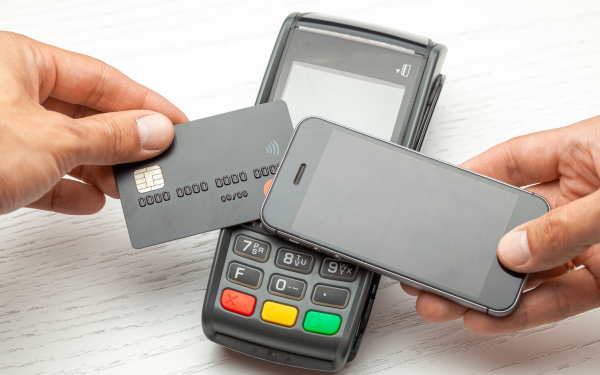When it comes to sales transactions, everyone who runs a customer-facing business knows one undeniable fact. Whether you run a shop, a restaurant, a bar, the box office of an entertainment venue or anything else, the one thing you want to avoid at all costs is keeping people waiting at checkout longer than is absolutely necessary. Long queues and waiting times kill customer satisfaction.
As a POS vendor, we put a lot of time and effort into strategising about how we can help clients deliver fast, efficient sales processes that keep customers happy. We are constantly striving to make our POS equipment faster, more reliable and more intuitive to use to keep pushing those marginal gains in transaction times. We’ve developed innovations like mobile POS tablets and self-service kiosks to provide agile alternatives to traditional checkouts.
No single thing will drive significant efficiency gains at POS. It’s a case of doing a little bit of everything – getting the blend of checkout options right, investing in quality systems, training staff etc. You can also add payments to that list.
Payment may be only one small part of the POS process, never mind the whole customer journey. But as the final interaction, as it were, it can have a disproportionately large impact on how people judge their experience. A faulty card reader, for example, or not being able to use a preferred payment method, can be incredibly frustrating.
Payment optimisation simply means making your payment processes as efficient, robust and reliable as possible. It’s an important part of creating a positive customer-focused experience and has several other benefits as well. Here’s what it involves, and what those benefits are.
How to optimise payments
With the dominance of today’s tap-and-go contactless payments, you might wonder how exactly you can make the process more convenient and efficient. But digital payments are complex and there are plenty of potential bumps you can work to smooth out.
One of the biggest challenges is balancing the demands of speed and efficiency with those of security. Payment processing is heavily regulated. For every transaction, there are three main security requirements:
- authenticating the identity of the payee and tackling fraud
- authorising the payment (i.e. checking the payee has sufficient funds and their account/card is valid)
- keeping the customer’s payment details private and encrypted.
All of these processes can potentially add friction to payments, yet they are absolutely necessary. Some of the things you can do to reduce this friction include moving to an end-to-end payment provider. Rather than having the payment process split into parts (for example, different banks handling authorisations for different payment methods), an end-to-end provider handles everything in one place, which streamlines approvals while guaranteeing end-to-end security as part of the SLA.
Other things to look at include the quality (and security) of your network connections for seeking payment approvals. Offline card readers are a major source of frustration for customers and potentially lead to lost revenue.
Finally, one of the simplest things you can do to optimise payments is to expand the number of payment methods you accept. An overwhelming 94% of consumers believe businesses should accept multiple payment methods. Not only does this give people the choice and convenience of using whatever method of payment they prefer/have on them, it also means there’s always a back-up available. If one method gets declined, it doesn’t necessarily mean it’s the end of the transaction.
Benefits of payment optimisation’
We’ve framed the incentive to optimise payments largely in terms of providing a smoother, more satisfying experience to your customers. But there are other benefits that are equally valuable. Most significant of these is the potential for payment optimisation to directly improve your bottom line.
By making payment processes faster and more efficient, you can increase your throughput and end up taking more money. The efficiencies of switching to an end-to-end payment provider can include lowering your payment costs. And with better security protocols in place, you can limit the amount of shrinkage you suffer from fraudulent transactions.




